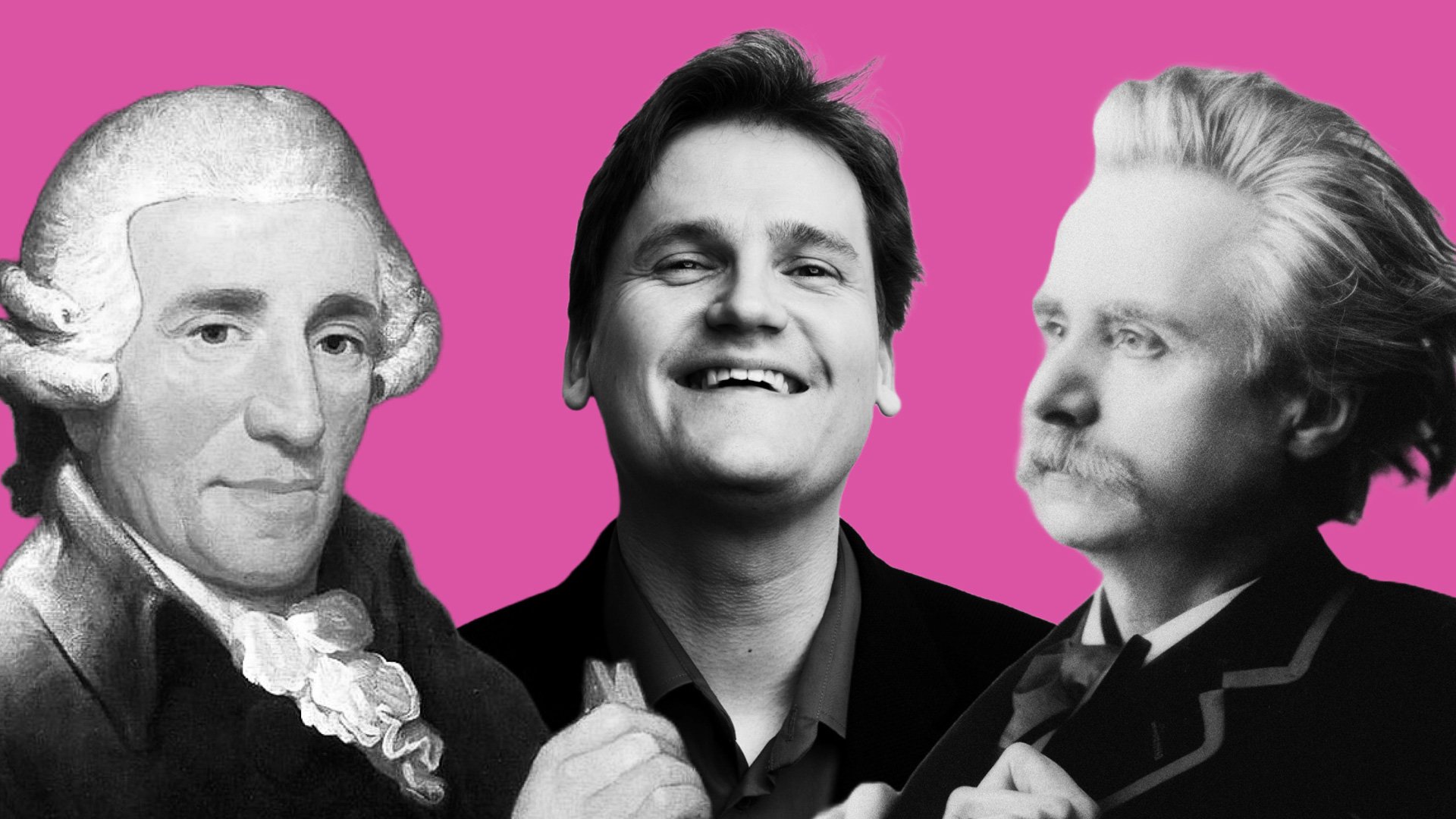Music writer Alison Wormell explores the music of our national tour, Aurora. This program tours Australia between Mon 21 October—Fri 22 November.
2024 has been a year full of auroras. Auroras appear when invisible electromagnetic waves from the solar wind interact with the Earth’s magnetic field, resulting in astonishing colours painted across the sky in gently waving filaments. This program is named for the extraordinary sound worlds created by Haydn, Grieg and Mustonen, but these mostly Nordic works are also joined by fine connections of compositional influences. When we study these pieces and their composers, it’s clear that all three composers are linked, even as musical styles have developed and evolved over the centuries.
Austrian composer Joseph Haydn is renowned for his string quartets, which developed from fairly free pieces without a supporting keyboard into a structured form of composition with long-ranging ideas across the work. By the time he wrote his String Quartet in D Major, Op.76 No.5 (1797) this form was so well ingrained that Haydn could expand and at times subvert it.
For example; this quartet’s first movement is a kind of theme and variations instead of a traditionally “serious movement”. This function is transferred to the second movement; a slow lament that gradually dies away.
The whole quartet is full of Haydn’s characteristic duality, reflecting a personality described as both earnest and humorous. His music is often full of wit, sparkling with clever whimsy that delights the listener through rhythmic creativity and unexpected melodic turns. Haydn’s thoughtful side is equally important and shines through in expressive moments. Nevertheless, motifs that recur across the different movements unify the work to create a seamless whole.
Next on the program is Olli Mustonen’s String Quartet No.1 (2016). Mustonen is a Finnish pianist, conductor and composer fascinated by the contrast between darkness and light. Although he initially came to fame as a concert pianist, Mustonen studied composition from a young age and feels it is just as important an expressive tool as playing or conducting. Consequently, it often feels like his music is really aiming to say something – there is an urgency in Mustonen’s music to express himself despite the neoclassical boundaries he adheres to.
A common theme in Mustonen’s compositions is duality and the journey from darkness into light; his first quartet is no exception. It has roots in the music of Bartók and Shostakovich, especially evident in the last movement labelled ‘fiery in Hungarian style’.
Mustonen has said his interest in music stems from how we become more aware of mysteries beyond our understanding even as our knowledge grows. Perhaps this explains how although this quartet increases in optimism and light, it remains engaged with the tension of the unknown.
This concert closes with Edvard Grieg’s String Quartet No.1 in G Minor, Op.27 (1878). Grieg was a Romantic composer who was intrinsic to the development of a definitive Norwegian style. His most famous piece is his Piano Concerto – if you know it, listen for a descending motif in the first movement similar to the opening of the concerto. This is just one motif borrowed from Norwegian folk music that worked its way into Grieg’s musical language.
Before he became committed to Norwegian nationalism, Grieg’s music was deeply rooted in early Romantic music. His structured approach to composition gradually loosened with the influx of folk music into his technique, and resulted in breaking traditional harmonic rules and an increased use of dissonance.
This new harmonic approach gave Grieg’s music impressionistic qualities which can be heard in this quartet. The music is unified by motifs reappearing across the work, rather than by traditional tonal relationships. This combination of impressionism and motivic development later inspired Debussy and Bartok.
© Alison Wormell 2024
ABOUT THE AUTHOR
Alison Wormell (they/them) is a music writer whose work focuses on demystifying classical music. Alison has written for Gramophone’s Opera Now Magazine, Southbank Sinfonia, Australian String Quartet, Lapland Chamber Orchestra, Australian Youth Orchestra, Cut Common Magazine, and Things Musicians Don’t Talk About.
